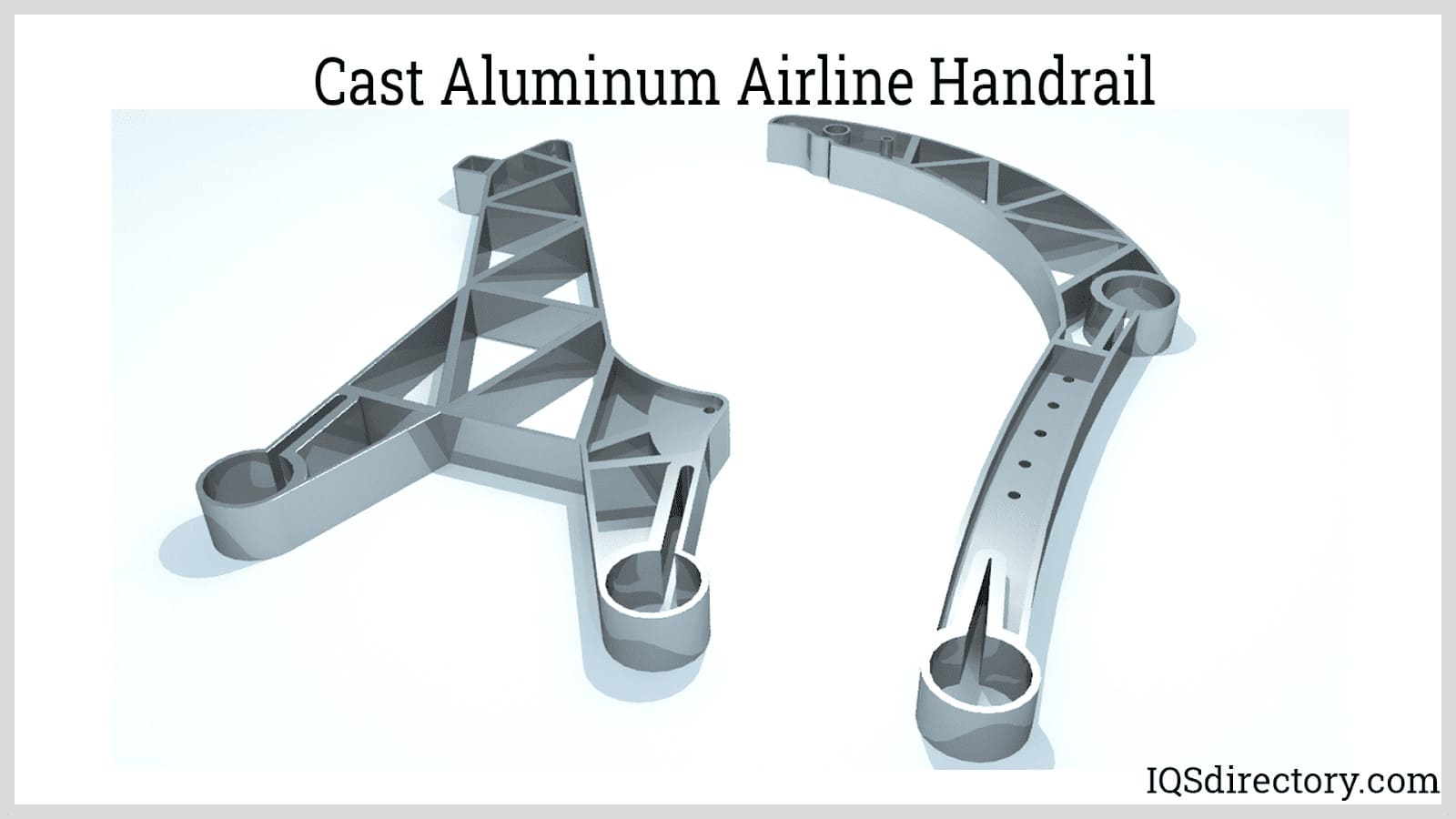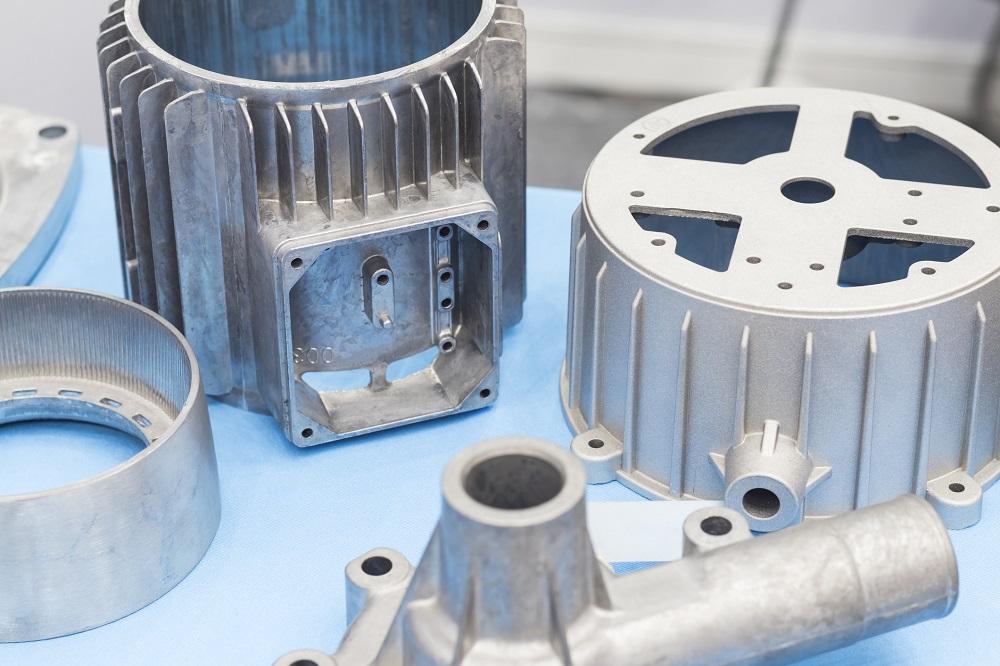Why Metal Castings continue to be vital in modern production
Finding the Vital Applications of Light Weight Aluminum Castings Across Numerous Fields
Aluminum castings play an essential function in numerous sectors. Their sturdy and light-weight attributes add to innovations in auto and aerospace sectors. Additionally, they enhance construction stability and consumer item style. As sustainability comes to be a top priority, the environmental benefits of aluminum spreadings further highlight their significance. Comprehending the substantial applications of this material can disclose understandings right into modern production methods. What certain developments are being made in these different sectors?
Automotive Market Innovations

Light weight aluminum spreadings play an essential function in electrical lorries, where weight reduction is paramount for battery efficiency. With the assimilation of aluminum in engine blocks, transmission housings, and architectural elements, car manufacturers can achieve premium resilience while maintaining peak performance. As the demand for efficient and sustainable vehicles expands, the automobile industry remains to welcome light weight aluminum spreading technologies, placing itself at the leading edge of technological advancements and environmental duty.
Aerospace Advancements
While the aerospace market constantly looks for ways to improve efficiency and effectiveness, innovations in light weight aluminum spreadings have actually become an important consider accomplishing these objectives. The light-weight nature of light weight aluminum considerably adds to sustain effectiveness, reducing total airplane weight without jeopardizing architectural stability. Technologies in casting methods, such as die spreading and financial investment casting, permit intricate styles that boost aerodynamics and performance.
Innovations in metallurgy have improved the stamina and rust resistance of light weight aluminum alloys, making them suitable for different aerospace applications, consisting of engine elements and body frameworks. The capacity to produce complex shapes reduces the number of components called for, simplifying setting up processes and reducing upkeep requirements. As aerospace manufacturers increasingly transform to aluminum castings, they are locating that these innovations not only drive functional efficiency but also support sustainability objectives through minimized power consumption during flight.
Building and construction Applications
Light weight aluminum castings play an essential duty in the construction industry, offering a combination of toughness, toughness, and lightweight residential properties that enhance architectural integrity. Aluminum Castings. These spreadings are made use of in a variety of applications, including home window structures, door frameworks, and roof, where their resistance to deterioration and weathering is particularly beneficial. Furthermore, light weight aluminum spreadings add to power effectiveness, as their light-weight nature minimizes the overall tons on frameworks, assisting in simpler transport and installment
Additionally, the flexibility of light weight aluminum permits complicated geometries and detailed layouts, meeting visual demands without jeopardizing architectural efficiency. In seismic areas, aluminum spreadings can be utilized in crucial architectural parts, offering substantial benefits concerning adaptability and strength. Generally, making use of aluminum castings in construction not only improves the efficiency of structures however additionally supports sustainable structure methods by enabling using recyclable products in construction tasks.

Customer Product Production
In customer goods manufacturing, aluminum spreadings play a crucial role in lightweight product design, permitting for less complicated handling and enhanced efficiency. Their enhanced toughness functions add to the durability and reliability of daily items. This mix of benefits makes light weight aluminum a preferred product in the competitive durable goods market.
Light-weight Item Layout
As manufacturers significantly prioritize performance and sustainability, light-weight item design has arised as a critical aspect of durable goods development. The assimilation of light weight aluminum castings enables developers Read Full Article to produce products that are not just lighter yet likewise more energy-efficient. This reduction in weight adds to decrease transportation prices and boosted user experience, as consumers increasingly seek easier-to-handle goods. In addition, light-weight designs promote cutting-edge looks, making it possible for brand names to distinguish themselves in a competitive market. The versatility of light weight aluminum enables for intricate forms and forms, boosting overall design freedom. Consequently, light-weight product design is becoming crucial for companies aiming to satisfy modern-day consumer needs while sticking to ecological considerations. This trend is improving how products are conceived and made throughout numerous sectors.
Enhanced Resilience Features
While modern consumers require products that are both lightweight and cosmetically pleasing, enhanced resilience features have actually become just as essential in customer items producing. Light weight aluminum castings offer remarkable strength-to-weight proportions, permitting manufacturers to develop products that endure everyday deterioration. The intrinsic corrosion resistance of light weight aluminum assurances that items preserve their look and performance in time, lowering the demand for frequent substitutes. Furthermore, casting techniques allow the production of smooth styles that enhance architectural integrity. Consequently, makers can provide durable goods that not only fulfill efficiency assumptions but additionally supply longevity. This focus on resilience not just enhances consumer complete satisfaction yet likewise straightens with sustainability goals by decreasing waste and advertising accountable consumption.
Electrical and Electronic Devices Industry
The electric and electronic devices sector increasingly relies on aluminum spreadings for their lightweight, durable, and extremely conductive homes. These spreadings are essential in making various elements, consisting of real estates, units, and heat sinks. Their low density enables decreased total weight in electronic devices, improving transportability without compromising performance. Furthermore, light weight aluminum's superb thermal conductivity is necessary for dissipating warmth produced by digital elements, making certain excellent working and durability.
Aluminum castings offer exceptional corrosion resistance, which is critical for maintaining digital stability in different atmospheres. The capability to develop complex shapes and intricate designs through spreading techniques further sustains technology in item development, enabling manufacturers to meet certain technical needs. As the demand for energy-efficient and high-performance electronic tools continues to grow, aluminum castings are placed as a crucial material, helping with improvements in innovation across the field. Their convenience and integrity make them crucial in the contemporary electrical and electronic devices landscape.
Sustainability and Environmental Effect
Recognizing the expanding issue for ecological sustainability, the aluminum spreading industry has actually made significant strides in lowering its ecological impact. The manufacturing of aluminum spreadings currently progressively makes use of recycled products, reducing power consumption and resources removal. This shift not just conserves sources but likewise lowers greenhouse gas emissions linked with main aluminum manufacturing.
In addition, advancements in innovation have actually resulted in extra efficient spreading procedures, even more lowering waste and improving energy efficiency. Lots of suppliers are adopting sustainable methods such he said as closed-loop systems that recycle water and minimize hazardous waste.
Aluminum's light-weight nature boosts gas performance in transport sectors, contributing to lower emissions over the lifecycle of cars. As the industry remains to prioritize and innovate sustainability, aluminum castings are positioned to play an important role in promoting ecologically liable methods throughout different industries, lining up with worldwide efforts to combat environment adjustment and promote sustainable development.
Frequently Asked Inquiries
What Are the Conveniences of Aluminum Castings Over Various Other Products?
Aluminum castings use lightweight residential properties, exceptional rust resistance, and excellent thermal conductivity. Additionally, they make it possible for detailed styles, decrease production prices, and supply enhanced durability, making them useful compared to conventional products like steel or iron.
Exactly How Are Aluminum Castings Produced?
Light weight aluminum castings are created via procedures like sand casting, pass away spreading, and financial investment casting. Molten aluminum is poured right into mold and mildews, permitted to cool down, and after that removed, leading to sturdy and exact parts for various applications.
What Is the Normal Life Expectancy of Aluminum Castings?
The regular life expectancy of light weight aluminum castings varies in between 10 to 50 years, relying on environmental variables, use problems, and alloy composition. Appropriate upkeep and care can significantly expand their toughness and efficiency in various applications.
Can Light Weight Aluminum Castings Be Reused?
Yes, aluminum castings can be reused successfully (Aluminum Foundry). The recycling process preserves the steel's residential properties, making it a lasting option for different applications, as a result contributing to more helpful hints environmental preservation and resource monitoring within numerous industries
What Industries Are Emerging for Light Weight Aluminum Spreading Applications?
Arising industries for aluminum spreading applications include electric automobile production, renewable resource industries, aerospace innovations, and clinical technology. These sectors leverage light weight aluminum's lightweight, durable residential properties to improve and introduce efficiency in numerous items and systems.
While the aerospace market constantly seeks means to boost efficiency and effectiveness, improvements in aluminum castings have emerged as a vital element in achieving these goals. Aluminum castings play a pivotal duty in the construction industry, offering a combination of toughness, longevity, and light-weight residential or commercial properties that enhance structural honesty. In customer goods producing, aluminum castings play a critical function in lightweight product design, permitting for much easier handling and enhanced efficiency. The electric and electronic devices industry increasingly counts on light weight aluminum spreadings for their light-weight, durable, and highly conductive residential or commercial properties. Aluminum spreadings are created through processes like sand spreading, pass away casting, and investment spreading.